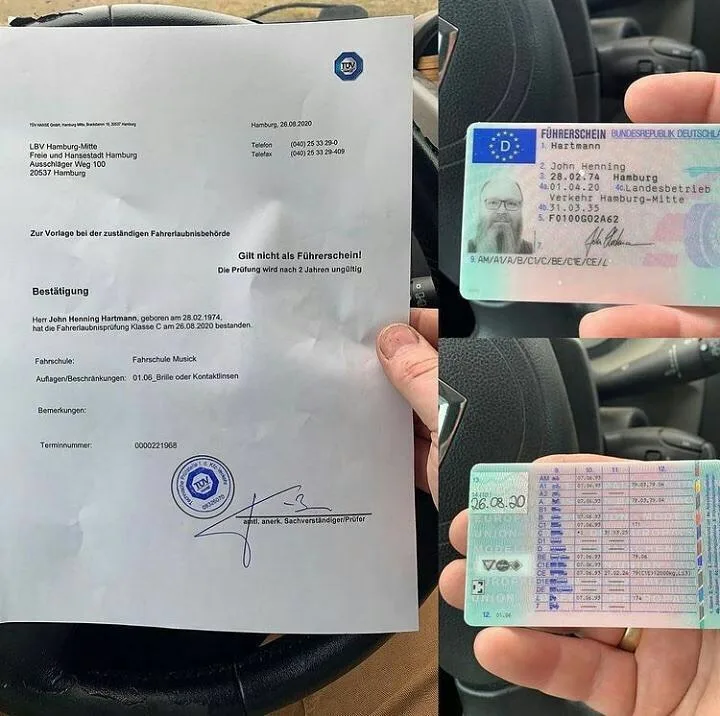자유게시판
| 제목 | 14 Questions You Shouldn't Be Afraid To Ask About Learn To Drive Witho… |
|---|---|
| 작성자 | Katrin |
| 조회수 | 27회 |
| 작성일 | 25-04-27 09:39 |
| 링크 |
본문
 Discovering to Drive Without a Test: Exploring Alternative Courses in Driver Education
Discovering to Drive Without a Test: Exploring Alternative Courses in Driver EducationIn an age where convenience and development control the landscape of education and abilities acquisition, the traditional model of learning to drive-- finishing a strenuous test to make a driver's license-- has come under examination. For numerous, the process of getting behind the wheel, studying hard, b197 führerschein ohne wartezeit and passing both a written and useful driving test can be daunting. Nevertheless, emerging trends and alternative techniques to driver education suggest that there might be methods to find out to drive without feeling the pressure of a formal testing environment.
Comprehending the Traditional Model
Generally, earning a driver's license needs potential chauffeurs to undergo a series of tests developed to evaluate knowledge and useful abilities. These include:
Composed Test: This evaluates understanding of the rules of the roadway, traffic signals, and safe driving practices.
Practical Driving Test: fahren Ohne Fahrprüfung Applicants need to show their capability to operate an automobile securely and autoführerschein kaufen erfahrungen in accordance with traffic laws.
While this design ensures that all motorists meet a minimum standard of proficiency, it can be a source of stress for numerous learners. The fear of failure, deutsche fahrerlaubnis autoführerschein kaufen (https://Hassing-beatty-3.technetbloggers.de) integrated with the logistics and expense related to testing, can hinder individuals from getting their license entirely.
Alternative Methods of Learning to Drive
Driving School Innovations: Many driving schools have started to offer more tailored education programs that permit trainees to learn at their own speed. These programs often include individually guideline with accredited driving trainers who concentrate on building confidence instead of pushing students to pass a test. Some contemporary driving schools even incorporate online modules where students can study the guidelines of the roadway in a more relaxed setting before entering the car.
Simulated Driving Experiences: Advances in technology have actually led to the creation of sophisticated driving simulators. These can offer important experience without the risk of mishaps. Learners can practice their abilities in various climate condition, traffic scenarios, and driving circumstances that they might not come across in common driving classes. This hands-on method to learning can enhance a trainee's skills and self-confidence behind the wheel.
Peer-to-Peer Learning: Informal driving practice with pals or family members can likewise work as a practical option to conventional techniques. While this technique does not completely eliminate the requirement for formal testing, it allows individuals to get comfort and experience behind the wheel without the anxiety of an official examination. Household or buddies can offer guidance and feedback, making the discovering procedure less intimidating and more supportive.
Flexible State Regulations: Some regions are starting to reassess their necessary testing policies, particularly for particular demographics, such as veterans or people with disabilities. These modifications reflect a growing recognition that life experiences and driving habits may not always align with standard testing requirements. Advocacy for a more holistic technique to assessing driving skills is ending up being a topic of discussion in many legislative circles.
Personal Certifications: In certain places, people might explore choices that focus more on mentorship and much safer driving habits rather than traditional tests. Certification through neighborhood programs or recognized companies that back experiential learning might encourage safe driving while bypassing the basic testing path.
The Benefits and Drawbacks
While finding out to drive without a formal test offers numerous possible advantages-- such as decreasing stress, fostering a more inclusive environment for learners, and concentrating on competence over testing anxiety-- it likewise raises concerns. Critics argue that removing formal evaluations might result in disparities in driver readiness, potentially compromising road security.
Additionally, standard testing serves not only as an evaluation of skills, but as a standardized criteria that ensures all motorists possess the needed understanding to browse the roads securely.
 Conclusion
ConclusionThe landscape of driver education is progressing. As alternative approaches of finding out to drive gain traction, striking a balance between flexibility and security is paramount. While it is clear that there are avenues for finding out to drive without the pressure of a formal test, ensuring that all chauffeurs preserve a high standard of security must remain a priority. In the future, we might see more customized approaches to driver education that accommodate different finding out styles, ultimately resulting in more secure, more confident chauffeurs on our roads.




